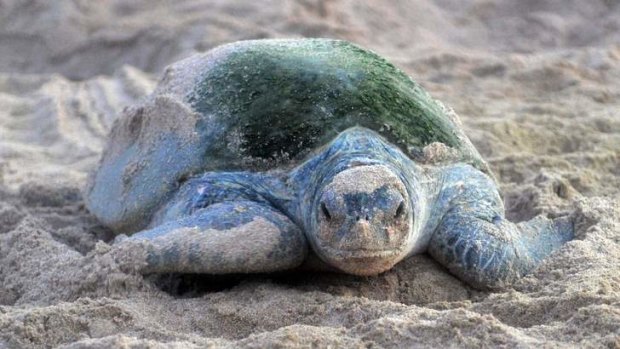By Tim Richards

Moonlight safari: Tiny turtles emerge magically, directed by the light of the moon.
I'm standing beneath the brightest full moon I've ever seen, on the easternmost point of the Arabian Peninsula.
The sand beneath my boots is soft and yielding as I turn to look over the Indian Ocean. Somewhere over there, a long way away, is Australia. And in the waters between are green sea turtles, heading this way to lay their eggs.
The place is Ras al Jinz, on the coast of Oman, one of the few places in the world that sea turtles visit all year round. The Ras al Jinz Turtle Reserve was created to protect these impressive creatures, which can grow to 1.2 metres in length and weigh more than 200 kilograms.
Just before 9pm, a multinational crowd of visitors gathered in the reserve's main building for the nightly guided tour. There were tourists from the West, Omanis in their distinctive dishdashas, an Indian family, and a group of Moroccans in short-sleeved robes. Climbing into a small bus, we were transported across the stony plain which led to the beach.
Now, awaiting a second busload of tour members, we're waiting quietly, a little awed by the after-dark serenity in this quiet corner of Oman. Once we're all present, we're led across the sand, with waves softly breaking to our right.
All attention is ahead, however, as we're led in smaller groups forward to an amazing sight: a huge sea turtle lying within a hollow in the sand. The guide leans down, gently lifts a flipper aside, and shines his torch to reveal a mound of gleaming white eggs.
Once buried by the mother, these will lie beneath the sand for two months or so before the tiny turtles hatch and make their way warily to the ocean to feed and grow. Though they're protected from humans here, they're still vulnerable to attack by crabs or seabirds which might intercept them on the way.
The egg-laying is an extraordinary sight, giving rise to mixed feelings. On the one hand I feel privileged to witness nature at work in this primal way; on the other hand I feel like an intrusive gawker. But then we head away from the mother to observe the other end of the process - newly hatched baby turtles making their way from sand to sea.
Our guide points out a tiny mini-turtle, floundering at first but heading instinctively to the brightest light it can sense. For a few moments that's our guide's torch, but when switched off it's the moonlit water.
We see several more baby turtles making this trek. They seem so tiny and vulnerable, and at one point I see a crab scuttle past seemingly with mischief on its mind.
Most of the babies will survive, however, and spend months as carnivores to build up their size before switching to a vegetarian diet. The males will never return to land, and the females only to lay eggs.
Big or small, they're magnificent creatures; I can see why so many cultures have incorporated turtles into their myths.
As we climb back on the bus, I mentally wish the newborns the best of luck. And bon voyage.
The writer travelled courtesy of Oman Tourism.
Sign up for the Traveller Deals newsletter
Get exclusive travel deals delivered straight to your inbox. Sign up now.